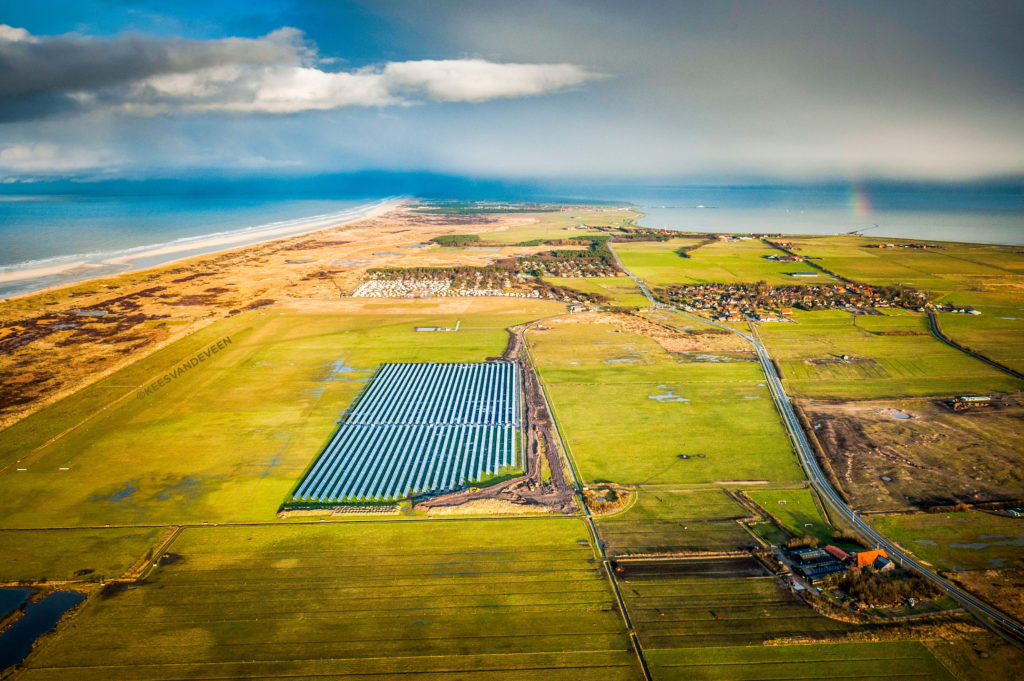Home » The Islands
IANOS selected the islands of Ameland (Netherlands) and Terceira (Portugal) to serve as “pilot islands” and three “Fellow Islands” – Lampedusa (Italy), Bora Bora (French Polynesia), and Nisyros (Greece) – to validate the replicability potential of the results of the pilot islands.

Currently, Ameland’s grid connection to the mainland and several transformers are aging and not able to cope with energy transition activities.
Through the Sustainable Ameland initiative and an advantageous ‘experimental status’ (in terms of regulation requirements) granted by the Dutch Ministry of Infrastructure and Environment, Ameland aims to establish a closed circular economy and to be fully decarbonised, energy neutral and self-sufficient in 2035. To achieve this, Ameland has set four goals:
The goals are aimed at reducing the energy dependence of the island. The implementation will revolve around the development of a dependable and reliable smart grid. A collaboration agreement (covenant) has been drawn up bringing together the municipality, companies, non-profit organisations and knowledge institutes. Together, these organisations target the development of large fuel cells (for local energy supply), multi-utility grids, local smart grids and the development of hydrogen and ozone production technologies. In recent years, several projects in support of this sustainable ambition have come to fruition, including sustainably produced hydrogen that is transported through the existing natural gas infrastructure and the construction of a natural gas filling station.
Ameland plans to increase the capacity of its grid connection with the mainland to accommodate the increase in renewable energy supply and peak demand, and to electrify and decarbonise the offshore industry around the island.
IANOS contributes to this ambition and extends it through several innovative interventions and integration with a Virtual Power Plant:

Due to the rough seafloor topography, an electrical connection is not possible on the island and therefore Terceira has a self-sufficient energy system.
Terceira has a subtropical climate with mild seasonal changes. Thanks to its volcanic origin, the island can make use of geothermal resources for power generation. Terceira aims to become a model for other volcanic islands in the EU. Several initiatives have been implemented to foster the growth of an economically, socially and environmentally sustainable energy sector, namely:
IANOS will strengthen and extend these initiatives through several innovative interventions and integration with a Virtual Power Plant:

The island of Lampedusa is located in southern Italy, belongs to the Pelagie archipelago, and encompasses Lampedusa, Linosa and Lampione (the last being uninhabited). Lampedusa covers an area of 20.2 km2, 92% of the total area of the archipelago. Lampedusa and Linosa have 6,216 inhabitants of which 5,795 live in Lampedusa. Their economy is mostly based on fishing, agriculture and tourism in summer.
How IANOS contributes to the island’s energy transition:
Bora Bora is a small island located in the South Pacific Ocean. It is part of French Polynesia (270 km northwest of Tahiti, Oceania). Bora Bora has 10,605 inhabitants and covers 29 km2, plus some 10 km2 of islets adjacent to the coral reef, forming a lagoon. The centre of the island consists of a dormant volcano with two peaks on each side; Mount Pahia and Mount Otemanu. Bora Bora is the most frequently visited island in French Polynesia after Tahiti with 125,000 visitors per year and is known for its luxury resorts.
How IANOS contributes to the island’s energy transition:
Nisyros is a volcanic Greek island located in the southeast Aegean Sea. It is situated between the islands of Kos and Tilos, with an area of 41.6 km2, and a population of 1,000 inhabitants. The Municipality of Nisyros includes Gyalí, an island with two mines, and 5 other uninhabited islands. Tourism is the mainstay of the economy. Nisyros receives some 70,000 tourists per year for short-term visits (one-day or so), 10,000 for long-term stays and 6,000 arriving by yacht during the summer season.
How IANOS contributes to the island’s energy transition:


H2020-LC-SC3-2018-2019-2020 / H2020-LC-SC3-2020-EC-ES-SCC
EUROPEAN COMMISSION
European Climate, Infrastructure and Environment Executive Agency Grant agreement no. 957810
This project has received funding from the European Union’s Horizon 2020 research and innovation programme under
grant agreement No 957810. This website reflects only the author’s view and the European Climate, Infrastructure and
Environment Executive Agency (CINEA), under the powers delegated by the European Commission, is not responsible
for any use that may be made of the information it contains.